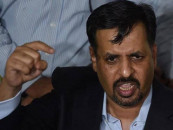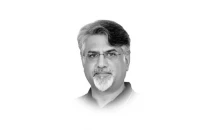NA panel sets limit on govt borrowing from SBP
NA unanimously approved a bill aimed at capping the federal government’s borrowing from the SBP.

The comprehensive plan also gives a five-year deadline to the federal government to retire its debt of Rs1.2 trillion, an average of Rs200 billion per annum, and proposes to replace a redundant Monetary and Fiscal Policies Coordination Board, headed by finance minister, with a Statutory Monetary Committee, headed by the State Bank governor.
The Monetary and Fiscal Policies Coordination Board has not held a meeting since May 2007 in violation of the law which requires quarterly meetings. Besides the finance minister, the Board comprises the commerce minister, deputy chairman Planning Commission, SBP governor and secretary finance.
According to the proposed State Bank of Pakistan Amendment Act 2010, the federal government cannot borrow more than 10 per cent of the previous year’s actual revenues and it will have to return the amount within 93 days. On top of that, the federal government will be legally bound to reduce the debt stock by an average of Rs200 billion annually.
The proposed law is backed by the International Monetary Fund (IMF) as the government recklessly borrows from the central bank which not only limits private sector credit but also cause inflation.
“The approval of the bill shows the government’s commitment to fiscal responsibility, though the real impact on private sector credit will be visible after five years,” said Shehnaz Wazir Ali of the PPP.
State Bank’s chief economist, Riaz Riazuddin, said “the limit on borrowing will ensure economic growth and create additional space for private sector credit.”
In comparison to the Board, a nine-member Statutory Committee will be headed by SBP governor and will have a deputy governor, three senior executives of the SBP appointed by the governor, two members of the Central Board of the SBP and two independent economists appointed by the federal government on the recommendations of the governor. The Committee will have vast powers of deciding monetary policy and capping government borrowing from the central bank. It will be directly answerable to parliament.
Director Monetary Policy of the SBP, Hamza Malik, said one of the core responsibilities of the Statutory Committee will be to set limits on federal government’s borrowings. He said in the past the government breached the borrowing limit by a wide margin.
Special Secretary Finance, Asif Bajwa, said the Statutory Committee is the other extreme as it will not have any federal government representation, but added the finance ministry supported the proposed piece of legislation.
Bajwa said the provincial governments can borrow from the central bank, provided they remain within the ceilings approved by the National Economic Council.
Hamza Malik said in case of calamity the government can borrow from the commercial market. “The government has sidelined the private sector and the new law will contain the increase in total debt,” he added.
He said the rationale behind fixing 10 per cent limit on borrowing was that the government needed at least Rs130 billion per annum to lower the debt stock in five years.
“It is not the magic number as it is linked with certain economic indicators,” said Riaz Riazuddin, the Chief Economist of the SBP.
Asif Bajwa said 90 per cent of federal government’s expenditures are on defence services and debt servicing and running the civil administration amounts to only Rs190 billion.
The central bank official said in most of the countries borrowing from the central bank has been banned, adding India, Brazil, Turkey, European Union, Sweden and Chile are examples of this.
According to the bill, the federal government will no more be in a position to suspend the Central Board of the State Bank.
Published in The Express Tribune, August 4th, 2010.



















COMMENTS
Comments are moderated and generally will be posted if they are on-topic and not abusive.
For more information, please see our Comments FAQ